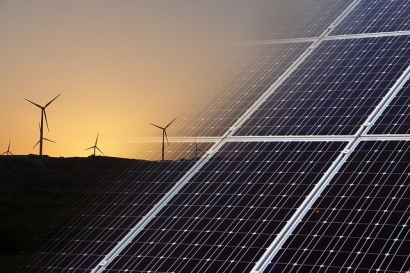
FERC's "Energy Infrastructure Update" report (with data through January 31, 2019) notes that 18 "units" of new solar capacity(631 MW) and four units of new wind capacity (519 MW) each beat new natural gas capacity (one unit - 465 MW) in January. No new capacity additions were reported for any other energy sources.
FERC's data also reveal that renewables (i.e., biomass,geothermal, hydropower, solar, wind) now account for 21.23 percent of total available installed U.S. generating capacity. Capacity is not the same as actual generation. Capacity factors for nuclear power and fossil fuels tend to be higher than those for most renewables. For calendar year 2018, the U.S. Energy Information Administration (EIA) reports that renewables accounted for a little more than17.6 percent of the nation's total electrical generation - that is, a bit less than their share of installed generating capacity.
Total wind generating capacity (97.18 GW) is rapidly closing in on that of hydropower (100.33 GW) and seems certain to overtake it sometime this year. Meanwhile the generating capacity of all renewables combined (254.57GW) is about to surpass that of coal (264.49 GW) - again, very possibly in 2019. In addition, utility-scale solar has now surpassed 3.0 percent of the nation's generating capacity.
FERC only reports data for utility-scale facilities (i.e., those rated 1-MW or greater) and therefore its data does not reflect the capacity of distributed renewables, notably rooftop solar PV which - according to the EIA - accounts for approximately 30 percent of the nation's electrical generation by solar. That would suggest that solar capacity is now actually 4 percent - or more - of the nation's total.
In its January 2018 "Energy Infrastructure Update," FERC listed 145,681 MW in net new proposed renewable energy capacity compared to 69,108 MW from fossil fuels. Thus, in just one year's time, proposed net new renewable energy capacity has grown by a third (32.29 percent) while that from fossil fuel sources has dropped by almost two-fifths (38.39 percent).

